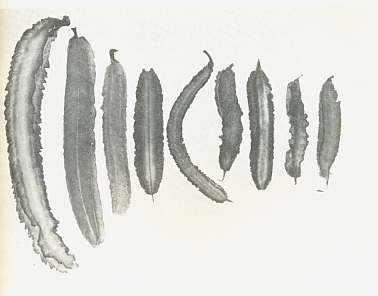Anonymous1 (talk | contribs) mNo edit summary |
Curtbeckmann (talk | contribs) m (1 revision(s)) |
(No difference)
| |
Revision as of 23:49, 6 January 2007

The winged bean, Psophocarpus tetragonolobus, is an especially good source of protein. This strictly tropical species, sometimes called the Goa bean, is a perennial from Southeast Asia, with attractive blue flowers, pods that are quadrangular in cross section, or with edges extended as wings, and tuberous roots. All parts of the winged bean plant are edible. The leaves are protein rich (see below) as are the tubers. Of the latter very little information is available. The green beans are harvested while large but still tender. They are eaten in the form of string beans, and although distinctive in flavor, they are very good sources of protein. Total proteins of the dried seeds can be up to 42 percent. Thus, the protein content is very similar to that of soybean. The bean is weakest with respect to the sulfur-bearing amino acids. In addition to its protein, winged bean is a rich source of oil, and a very good source of vitamin E.
The winged bean is cultivated chiefly for the tender young pods. The young stems, leaves, and flowers may also be eaten. The green seeds are included in soups and vegetable dishes. The ripe seeds may he sprouted, and present then all of the advantages of bean sprouts. Ripe seeds are sometimes roasted like peanuts. They should make a. nutritious meal, or perhaps a butter, but in fact their uses in this respect have hardly been explored. Because of their perennial nature, multiple uses, and especially high protein content, winged beans should be exceptionally good for the home garden, and for the survival diet.
See Also
- Root crops (NRI, 1987, 308 p.), Chapter 35
- The Winged Bean High Protein Crop for the Humid Tropics
- Traditional Field Crops (Peace Corps, 1981, 283 p.), Appendix H